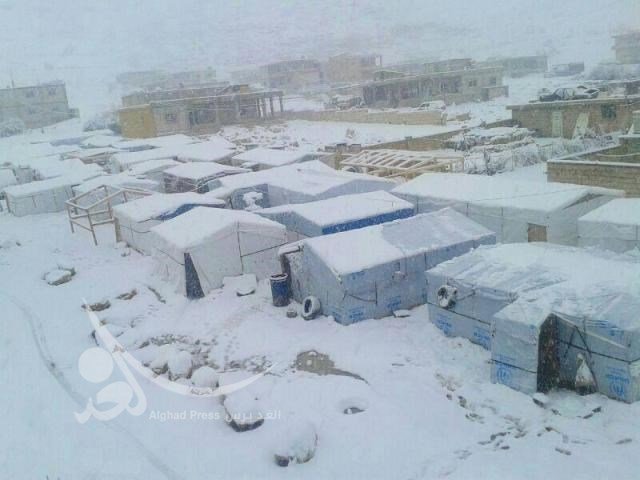By Miyako Hamasaka | PR Manager
Most of refugee children in Iraq do not have schools in 2014, this is because the schools far away from the camps. The other reasons of the schools in the cities centers, which cannot assimilate the large numbers of refugee students, are more than the half of Iraqi refugees in the camps of Kurdistan cities. The Kurdistan government prepares 66 caravans, using it as schools for the refugee students and 46 schools (caravans). Now, it still does not prepare the requirements like desks, blackboards, books, copybooks and teachers.
These caravans do not assimilate 15% from the refugee students in Kurdistan, we ask all of the humanitarian organization and the Iraqi government to prepare the enough schools for them. The fact is they loss two scholastic years and we do not know how many other years they will be loss.
The government requires a manger of the Department of Education (DOE) to install 200 caravans for the classrooms of the refugee students and 20 caravans for the latrines. Now, still only 15 schools (caravans) are prepared at the suburbs. The Iraqi government provided 500 caravans for the other suburbs as 80 caravans for each of the DOE.
Although there is the lack of the school buildings for the refugee students, the international society must be aware of supporting the children with the facilities for the children’s study.
2.1 million people, from the refugees have very hard conditions in the hardiness of the cold weather, more than 100 children and babies dead in this winter.
The Displaced Students
As we train teachers and students to raise their hygiene; health and environmental awareness, distribution of hygiene, and cleaning materials for them in schools covered by JEN project.
We have noticed that there are the numbers of displaced students from other governorates. They have been enrolled in these schools. We have made a statistic about their numbers. It has been agreed with the authority on the need to provide them with hygiene like the rest of the students and add other materials to them. Where it was agreed to:
The materials were purchased and transferred to the place where we arrange materials, according to the share of each school.
We met the school administrations in the presence of environmental education and school health official in the Department of Education (DOE). We talked with them on the need for special attention to the displaced pupils and distribution of materials on them. We asked them to tell us the date of Parents and Teachers Council hold in the second semester of the school year in order for us to attend, and in cooperation with the school administration gives parents of students some guidance pertaining to the public and personal health and pay attention to hygiene. We also delivered the school administrations CD disk containing items of training curriculum to be used to educate students and their parents in different occasions.
Also, subsequently we delivered school administrations the materials allocated to them; we visited the schools and participation with school administrations in distribution of materials to the displaced students and gave them advice concerning cleanliness importance and some guidance that raised their health and environmental awareness.
This initiative has won the thanks and appreciation the DOE officials and the administrations of schools and student in turn; they gave thanks to the Japanese people in general and in particular to JEN.
Distribution of Winterization items vouchers – Preparation phase
JEN is preparing the voucher distribution for Internally Displaced Persons (IDP). This voucher can be used as a payment for winterization items such as heater, kerosene, and blanket so on.
There are three ways to distribute items to people in needs. The first way is that NGO procures items and distribute them directly to people. The second one is that NGO distribute vouchers to people and people buy pre-identified items at pre-appointed shops. The last one is that NGO provide cash to people and people buy what they need at their selecting shops.
The best way to distribute items is up to the situation of area where NGO is working. For example, immediate after natural disaster the distribution of cash or voucher is not realistic because the most of shops and logistics are not working. As for IDP assistance in Kurdistan, taking into consideration that needs among families hugely varies and shops are properly functioning in the area, JEN decided to distribute vouchers.
The most important activities in preparation phase are the assessment/registration of voucher recipients as well as the arrangement with local shops.
For the assessment/registration of voucher recipients, JEN staff visits household by household and collect the information of household such as ID card, the number of family members, and the current situations, by using smartphone applications.
In local shops which agree to participate in our voucher scheme, JEN staff explains shop owners about the administrative procedures and terms and conditions so on, by visiting one by one.
Every time we visit people and talk with shop owners, we are getting more confident that this voucher distribution could accurately response people’s needs and could contribute the business increase in the host community.
By Miyako Hamasaka | PR Manager
By Miyako Hamasaka | PR Manager
Project reports on GlobalGiving are posted directly to globalgiving.org by Project Leaders as they are completed, generally every 3-4 months. To protect the integrity of these documents, GlobalGiving does not alter them; therefore you may find some language or formatting issues.
If you donate to this project or have donated to this project, you can recieve an email when this project posts a report. You can also subscribe for reports without donating.
